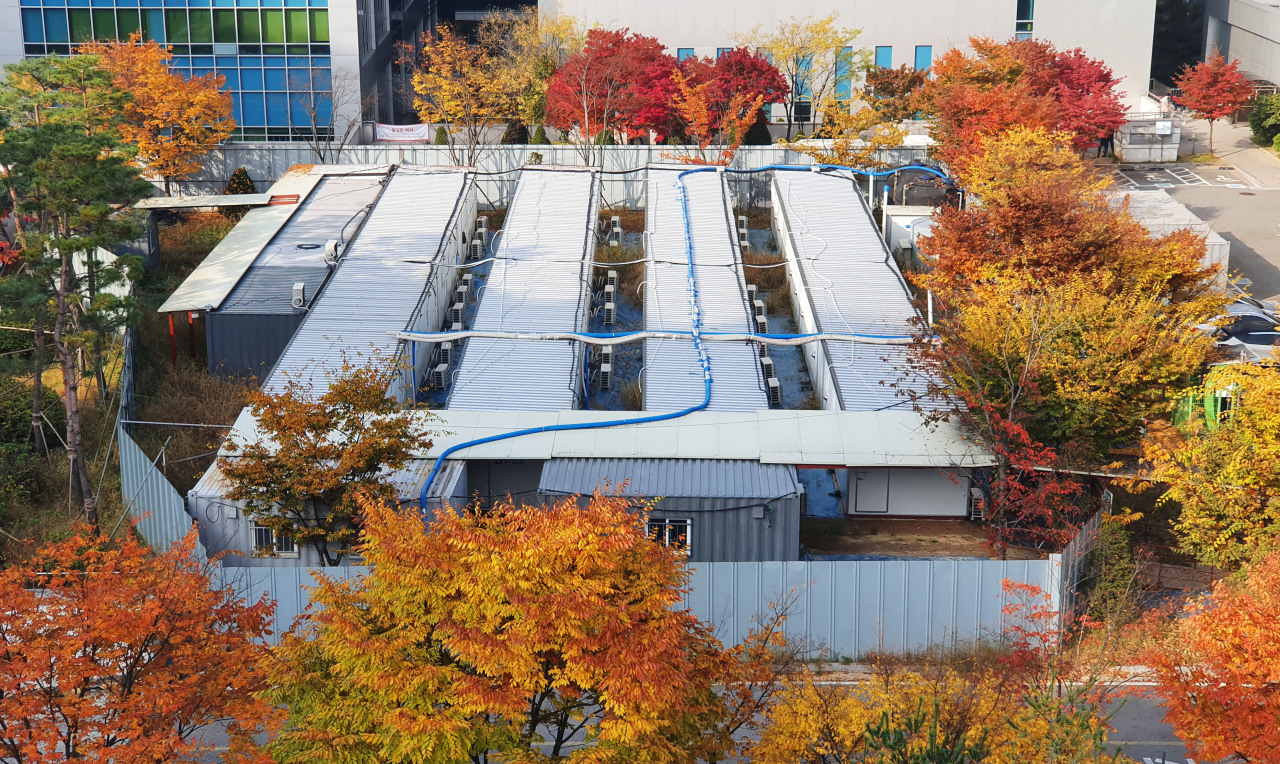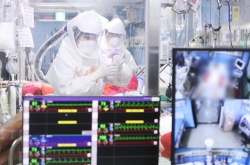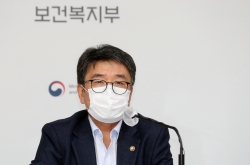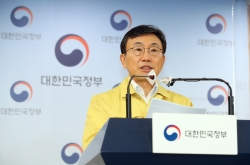South Korean public health authorities are for the time ruling out reverting to social distancing rules previously in place, despite a steep increase in hospitalizations and deaths from COVID-19.
The number of patients with severe or critical COVID-19 rose to an all-time high of 473 on Thursday, replacing the record of 460 set the day before. Previously the Ministry of Health and Welfare said the country’s health care systems could manage up to 500 patients undergoing intensive care per day “without significant strain.”
In and around Seoul 73 percent of intensive care beds were occupied as of Wednesday afternoon, nearing the threshold of 75 percent for activating the contingency plan -- which will put a stop to country’s phased exit from the pandemic and reinstate interventions. Nationwide the intensive care occupancy rate stood at 59 percent.
The record increase in intensive care admissions comes in less than two weeks since Korea entered the first of the three-phase return to normal on Nov. 1.
Son Young-rae, the Ministry of Health and Welfare’s spokesperson, told reporters during a closed-door meeting that the country would stick with the return to normal plans, and that latest trends aren’t worrying enough to consider going back.
“We’ll have to look at the trends in the following weeks,” he said. “But I can tell you that based on the recent trajectory restoring social distancing requirements or putting the reopening on hold isn’t being considered.” Asked if the country would be ready to move on to the second phase of the return to normal in mid-December as scheduled, he replied that was the aim.
He explained that as the country reopens, a rise in patients was something that was “expected to follow.” “The government is committed to bringing normal life back and rising from the pandemic. So far the volume of hospitalizations is within the predicted range.”
He went on, “Our hospitals are running smoothly, and more beds are set to become available in the coming weeks as a result of the administrative orders to hospitals.” To ramp up critical care capacity, the ministry was also securing more respirators and life support machines known as extracorporeal membrane oxygenation, or ECMO.
Dr. Eom Joong-sik, an infectious disease specialist at Gachon University Medical Center near Seoul, said hospitals were once again scrambling to make room for an influx of COVID-19 patients. The ministry on Nov. 5 ordered hospitals to save a certain amount of their intensive care beds for COVID-19 patients amid shortages, marking the third such order to be issued over the pandemic.
Hospitals had four weeks to free up their beds to take in more COVID-19 patients, but that left non-COVID-19 patients who are just as in need of urgent care with nowhere to go, Eom said. Often these patients have unique needs that cannot be taken care of at smaller hospitals.
“An ICU bed occupancy rate of 50-something percent may not seem high, but most of them are concentrated in Seoul area. Since these patients are very sick, they can’t be traveling all the way to Busan from Seoul, for instance,” he said.
In the last 10 days or so, 125 patients in the Seoul area had to be moved to hospitals elsewhere. Son of the ministry said the bed assignment team was working with municipalities to find beds that can accommodate patients in Seoul and cities nearby. Asked how many ambulances and staff were in charge of transporting intensive care COVID-19 patients from one region to another, he could not immediately answer.
Although at-home recovery was expanded as a way to alleviate the burden on the system, that didn’t help the intensive care units much, Eom said.
From late September home recovery has been the default arrangement for patients under 70 with mild or no symptoms at the time of diagnosis. By Wednesday midnight, 3,994 patients were isolated at home, 1,896 of them in Seoul.
Dr. Paik Soon-young, an emeritus professor of microbiology at Catholic University of Korea, said death rates have been continuing a troubling uptick since before the Nov. 1 return to normal.
“Social distancing measures had been gradually eased from September, before they were lifted further early this month,” he said. “Deaths have been ticking up for several weeks now.”
In October an average of 12 people died with COVID-19 each day, totaling 377 deaths over the month -- the largest monthly toll since the wave of nursing home outbreaks in January. Just 10 days into November, deaths are climbing even more rapidly compared to the month prior, with 18 people having died a day on average so far.
The case fatality rate rose from around 0.3 percent in August to 0.7 percent in October. “That is just the overall death rate. About 90 percent of the deaths are seen in people ages 60 and over,” he said.
“As Korea resolves to coexist with the virus, we need an open conversation on how many deaths we are willing to accept. Public health authorities have yet to suggest or provide the threshold for how high a death rate can be deemed ‘manageable.’”
On the recent death numbers, Son of the ministry urged more caution from people who haven’t been vaccinated. In Korea deaths were nearly five times as more common among the unvaccinated than the vaccinated, he said, and the unvaccinated were six to seven times more likely to end up hospitalized than the vaccinated.
As of Wednesday’s end more than 77 percent of 51 million people in Korea had been fully vaccinated.
By Kim Arin (
arin@heraldcorp.com)







![[Today’s K-pop] Blackpink’s Jennie, Lisa invited to Coachella as solo acts](http://res.heraldm.com/phpwas/restmb_idxmake.php?idx=644&simg=/content/image/2024/11/21/20241121050099_0.jpg)



